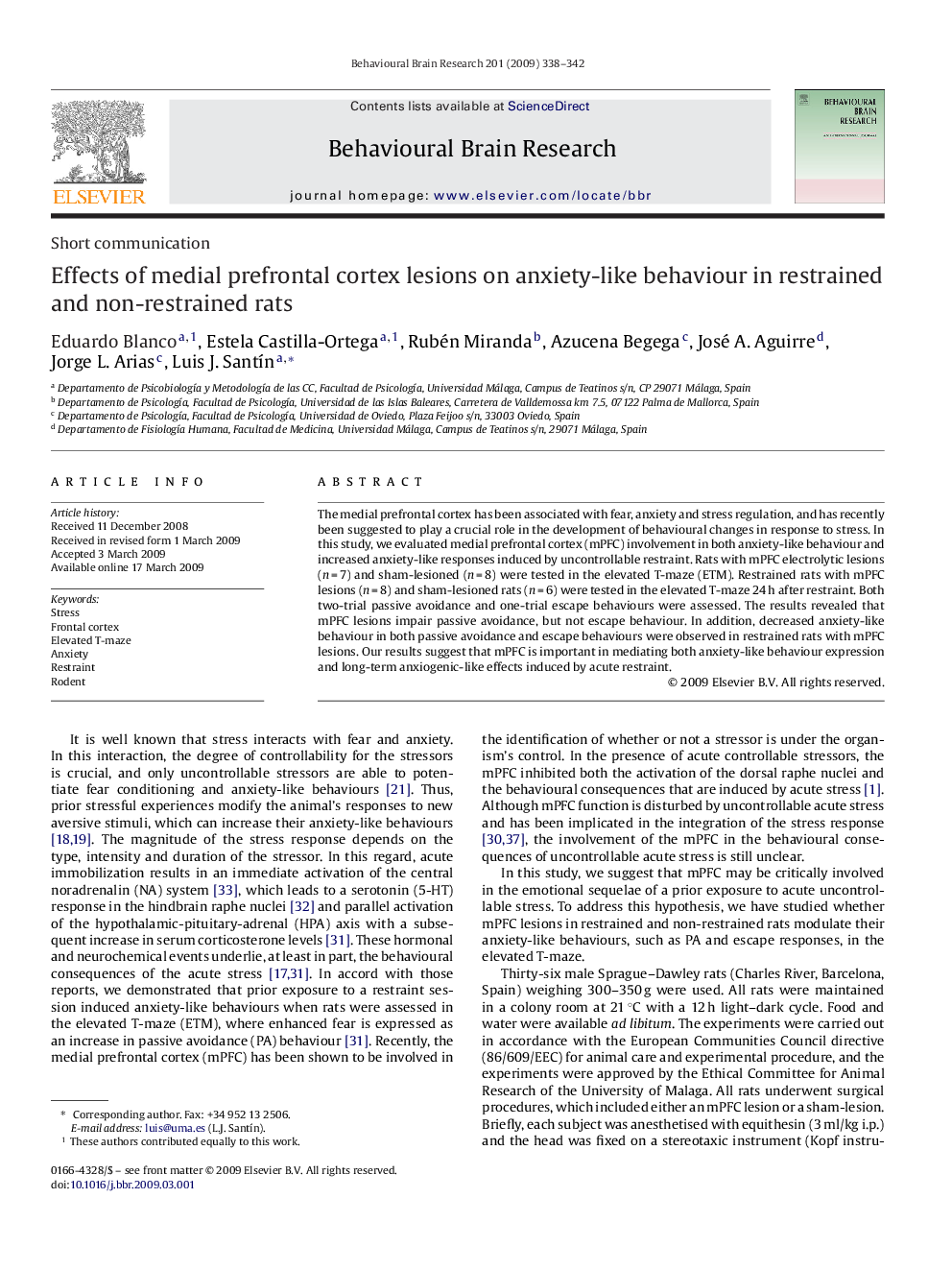| Article ID | Journal | Published Year | Pages | File Type |
|---|---|---|---|---|
| 4314728 | Behavioural Brain Research | 2009 | 5 Pages |
The medial prefrontal cortex has been associated with fear, anxiety and stress regulation, and has recently been suggested to play a crucial role in the development of behavioural changes in response to stress. In this study, we evaluated medial prefrontal cortex (mPFC) involvement in both anxiety-like behaviour and increased anxiety-like responses induced by uncontrollable restraint. Rats with mPFC electrolytic lesions (n = 7) and sham-lesioned (n = 8) were tested in the elevated T-maze (ETM). Restrained rats with mPFC lesions (n = 8) and sham-lesioned rats (n = 6) were tested in the elevated T-maze 24 h after restraint. Both two-trial passive avoidance and one-trial escape behaviours were assessed. The results revealed that mPFC lesions impair passive avoidance, but not escape behaviour. In addition, decreased anxiety-like behaviour in both passive avoidance and escape behaviours were observed in restrained rats with mPFC lesions. Our results suggest that mPFC is important in mediating both anxiety-like behaviour expression and long-term anxiogenic-like effects induced by acute restraint.
